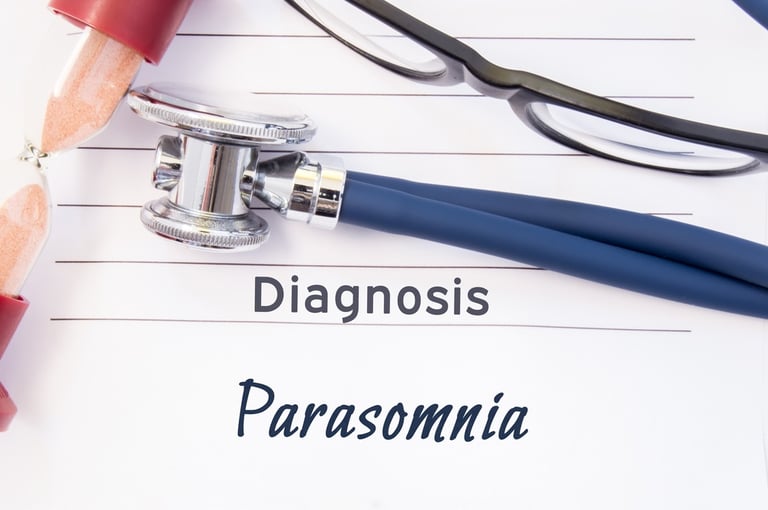
What is a parasomnia? Do you talk or walk in your sleep? Move your limbs or kick your spouse? Have vivid nightmares? Raid the refrigerator? Sleepwalk?
If the answer is yes to any of these, you may have a parasomnia. “Parasomnia” is defined as any abnormal behavior (with the exception of sleep apnea) that occurs at some point during sleep — while you’re in REM or non-REM sleep or when you’re falling asleep or waking up.
The above list of symptoms is just a small sample of the potential behaviors that fall under this term’s umbrella, but they give a general sense of what some parasomnias are like. Many if not most parasomnias are harmless, though the unexpected behaviors may be annoying or alarming (particularly to your family or bed partner).
However, some parasomnias may disrupt your sleep and lead to distracting or frustrating daytime sleepiness. Others are serious enough — risking your health or the well being of those who sleep in a bed you — that visiting a doctor may be a necessity.
For the purpose of classification, parasomnias fall into two basic categories: Non-REM Related and REM Related.
Non-REM Related Parasomnias
Non-REM related parasomnias happen during the non-REM stages of sleep (phases 1, 2, 3, or 4). The incidents usually during the earlier part of the night. The following are some of the more commonly-reported types.
Confusional Arousals
Have you ever acted strangely right after waking? You probably don’t remember, but your bed partner, spouse, or parent may remind you of a time you said or did some weird thing in the middle of the night. (Example: Your partner may ask you why you’re sitting up in bed; you answer, “I need to feed the pigeons.”)
This phenomenon is called confusional arousal, and the definition resembles its name: a noise or a person arouses you from sleep; your response is confused.
People in this state appear fully awake, but their thinking and memory are muddled. They may respond to direct questions, but their answers are blunt or make no sense. This behavior can last minutes or hours. People with this parasomnia rarely remember what happened later.
Sleepwalking (somnambulism or noctambulism)
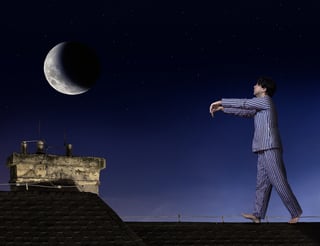
If you get out of bed and move around while asleep — usually with your eyes open, but glazed over — you have been sleepwalking. Often, people with this parasomnia first become aware of their condition when they wake up outside of their bedrooms: for example, in a different room, in the back yard, or in a car.
Sleepwalkers may find they’ve completed tasks in the process, ranging from simple, repetitive motions (like jogging, or opening and closing a refrigerator door) to fairly complex tasks (like house cleaning or moving furniture).
Sleepwalking episodes last from a few seconds to several minutes. Often, sleepwalkers have no memory of the incidents afterward.
Sleep Terrors (or Night Terrors)
Night terrors, or sleep terrors, usually happen in the first half of the night. You’re probably familiar with them from watching scary movies: that moment when a character sits up in bed, screaming, gasping, shouting nonsense, and thrashing about. Her heart’s racing and her eyes are open wide and straining as if she’s just awoken from a horrifying nightmare.
In reality, sleep terrors are more terrifying for bed partners, family members, and roommates than they are for the individuals who experience them; quite often, people with this parasomnia sleep through the incident and don’t even remember it. (Though some may recall small fragments of bad dreams.)
Sleep Related Eating Disorder
In recent years, eating while sleeping has become well known through media coverage of the side effects 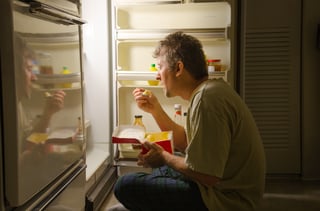 of certain sleep medications. However, sleep eating can be a parasomnia in its own right, independent of any medications.
of certain sleep medications. However, sleep eating can be a parasomnia in its own right, independent of any medications.
What does sleep related eating disorder look like? Typically, someone with this parasomnia awakens — but only partially — in the middle of the night to binge eat or drink. Usually, sleep eaters gorge on a large quantity of high-calorie food very quickly. Often they eat items or combinations they wouldn’t choose to eat when awake: for example, a bag of chips, a jar of peanut butter, and a container of chocolate syrup.
Binges can last as little as ten minutes, and people usually don’t remember them (or if they do, they remember them only slightly).
This disorder can be very dangerous, however, because people who have it may consume toxic substances or uncooked items. They may also start fires in their sleep while trying to cook. Long-term, they may also have trouble with obesity and high cholesterol, as well as psychological ramifications from their weight gain or loss of control.
REM Related Parasomnias
REM related parasomnias happen during REM sleep, usually in the later parts of the night. They include:
REM Sleep Behavior Disorder
If you’ve ever had action-filled, violent dreams that cause you thrash around in bed or act out some of the movements from your dream, then you may have this parasomnia.
REM Sleep Behavior Disorder (RBD) is considered a brain disorder. It’s potentially dangerous because the episodes tend to escalate as time goes on. If you have a sleep partner, he or she may be at risk for being hit, punched, kicked, or worse during the night. If you suspect this condition, you should visit a sleep specialist for diagnosis and treatment.
Sleep Paralysis
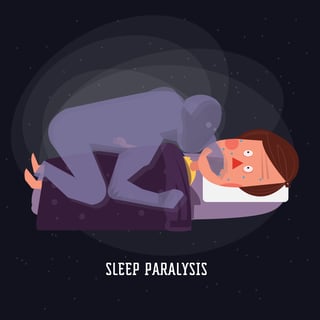 Have you ever found yourself awake and and aware of what’s going on around you — but unable to speak or move your arms, legs, or head? A hallucination may accompany this sensation of being frozen; for example, you may see or sense a frightening presence in the room with you.
Have you ever found yourself awake and and aware of what’s going on around you — but unable to speak or move your arms, legs, or head? A hallucination may accompany this sensation of being frozen; for example, you may see or sense a frightening presence in the room with you.
This parasomnia is called sleep paralysis, and it usually happens when you’re falling asleep or waking up. Episodes can last for a few seconds or several minutes; they end on their own or when someone touches you. Though not necessarily dangerous, episodes can be very unsettling.
Nightmare Disorder
If you have nightmares frequently and they disrupt your sleep on a regular basis, causing you to wake prematurely and preventing you from going back to sleep due to anxiety, then you may have this disorder.
Other Parasomnias
The parasomnias above are some of the ones most commonly seen by sleep centers and sleep medicine physicians — probably because they’re among the most disruptive and disturbing to patients and family members. However, they don’t represent the full list of unusual behaviors that can occur during sleep.
Other parasomnias include sleep talking, sleep groaning, bedwetting, sleep sex, bruxism (teeth grinding), and exploding head syndrome (hearing loud, imaginary crashing or banging noises as you wake up or fall asleep).
Risk Factors: Who Has Parasomnias?
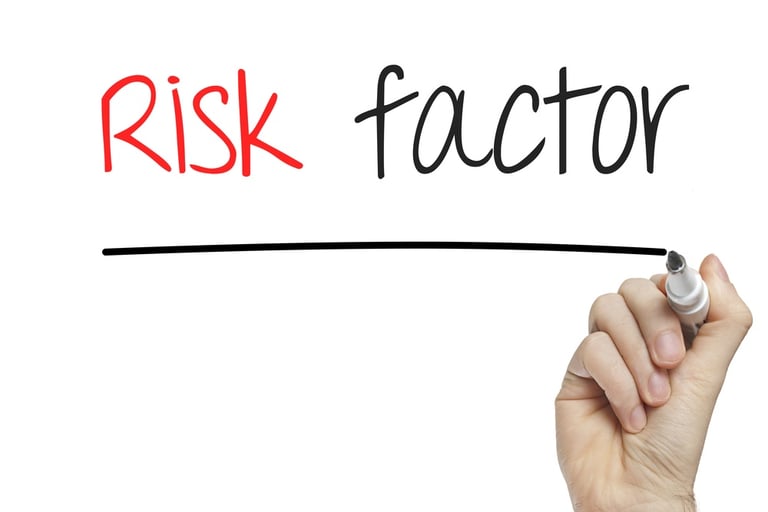
Are you likely to experience a parasomnia? The risk factors are:
- Children are more likely to experience parasomnias like bedwetting or sleepwalking, and sometimes night terrors. Often they grow out of these conditions.
- Alcohol or drug use. If you regularly take or abuse substances, you increase your chance of experiencing night terrors or sleepwalking. Alcohol and drugs can also worsen other parasomnias you may already have.
- Some parasomnias are inherited conditions; if a parent sleepwalks, for example, you may be more like to do so as well.
- Some medications list certain parasomnias among their potential side effects.
- Other health issues. Some parasomnias can be linked to other illnesses, disorders, or conditions; for example, people with Parkinson’s disease often also have REM sleep behavior disorder.
- During periods of stress, some (either children and adults) may temporarily experience a parasomnia like sleepwalking or sleep talking. The symptoms often go away when the stress resolves itself.
- If you’ve been through a trauma, you are more likely to experience nightmare disorder.
Summary
Parasomnias encompass a variety of different behaviors that happen during sleep. Some are harmless; some are annoying. Others present a real danger to sleep partners or to the person experiencing the insomnia.
If you suspect a parasomnia may be compromising the quality of your sleep and health, see a sleep medicine physician for a diagnosis. A sleep study will likely be required to confirm a diagnosis.
The good news: many parasomnias can be treated, and their symptoms minimized, with medication, lifestyle changes, or behavioral therapy (or some combination of these approaches).
If you live in Kansas. please click the link below to request a FREE 10 minute phone conulation over the phone.










Leave a comment